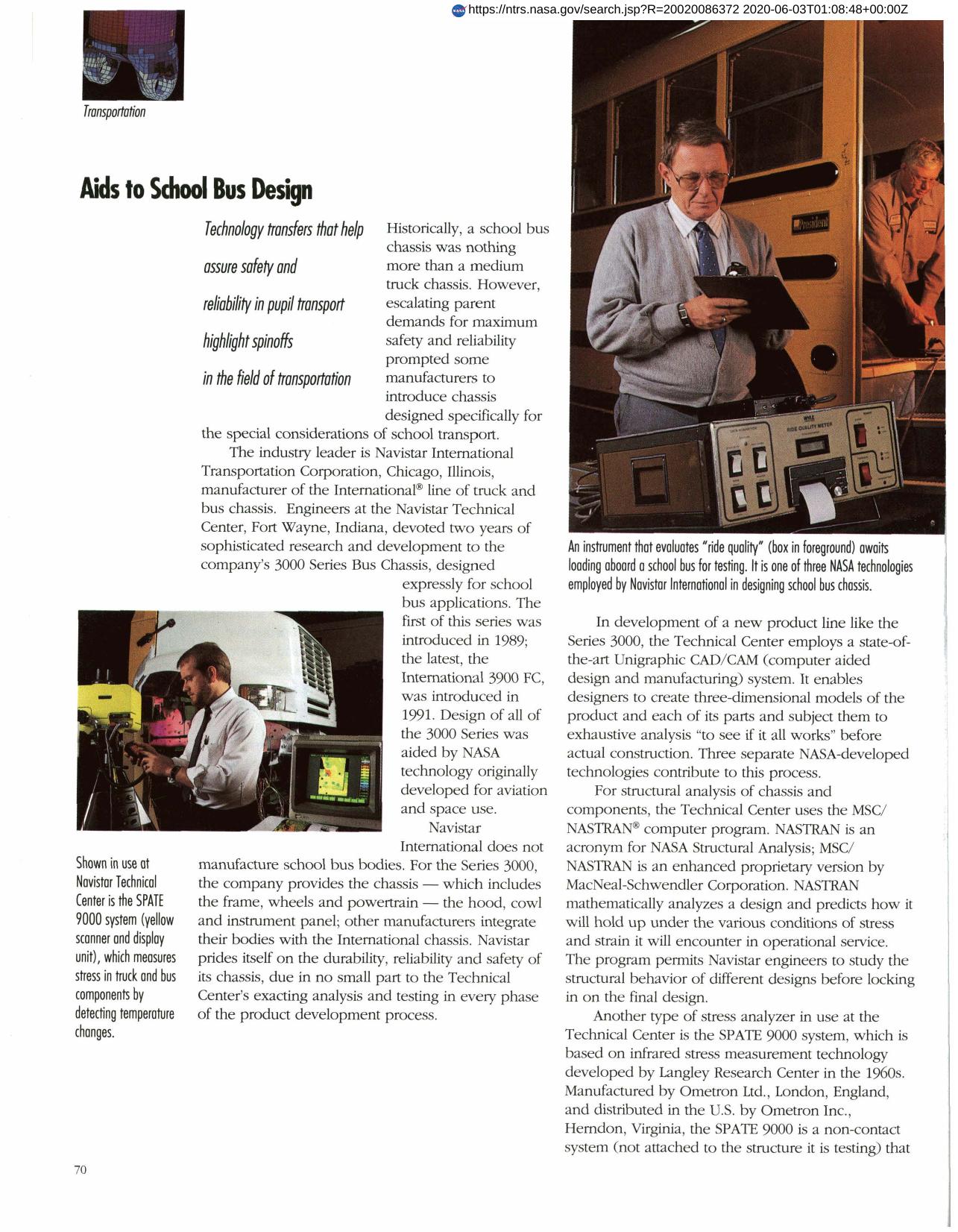
Aids to School Bus Design
Navistar International Transportation Corporation, Chicago, IL, used three separate NASA-developed technologies in the design and testing of their 3000 Series Bus Chassis which was developed expressly for school bus applications. For structural analysis, they used the MSC/NASTRAN program which mathematically analyzes a design and predicts how it will hold up under stress. They also used the SPATE 9000 system for non-contact measurement of stress, load transfer mechanisms, detection of hidden flaws, and monitoring structural changes during fatigue testing. SPATE 9000 was based on infrared stress measurement technology developed by Langley Research Center. They also employed the Wyle Ride Quality Meter, which was developed by Langley to aid in passenger aircraft design by providing an accurate measurement of ride vibration and sound level. These numbers translate into a subjective discomfort level index. These technologies contribute to the company's 45-48 percent share of the school bus chassis market.
Full article: http://hdl.handle.net/hdl:2060/20020086372

Aids to School Bus Design

Aids to School Bus Design













